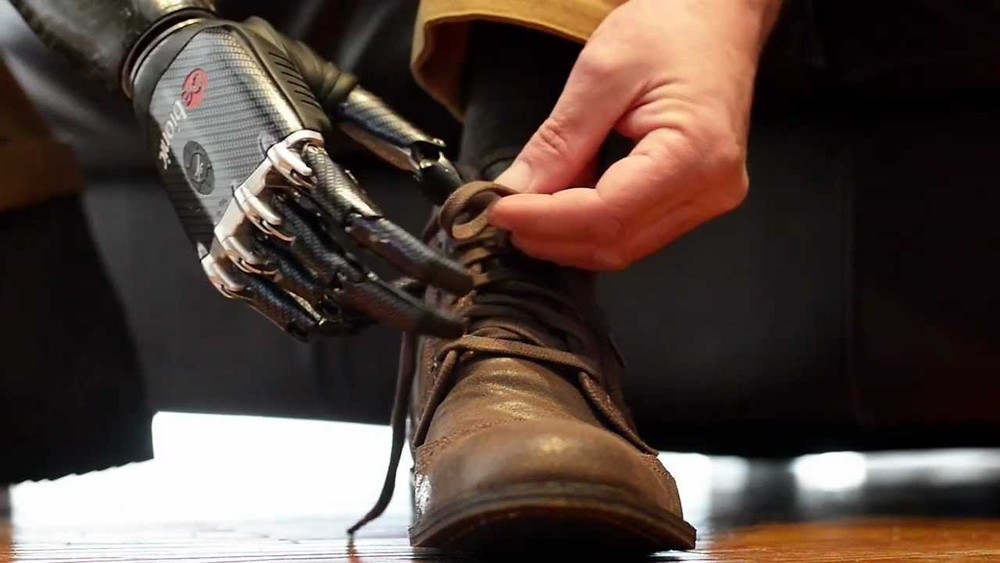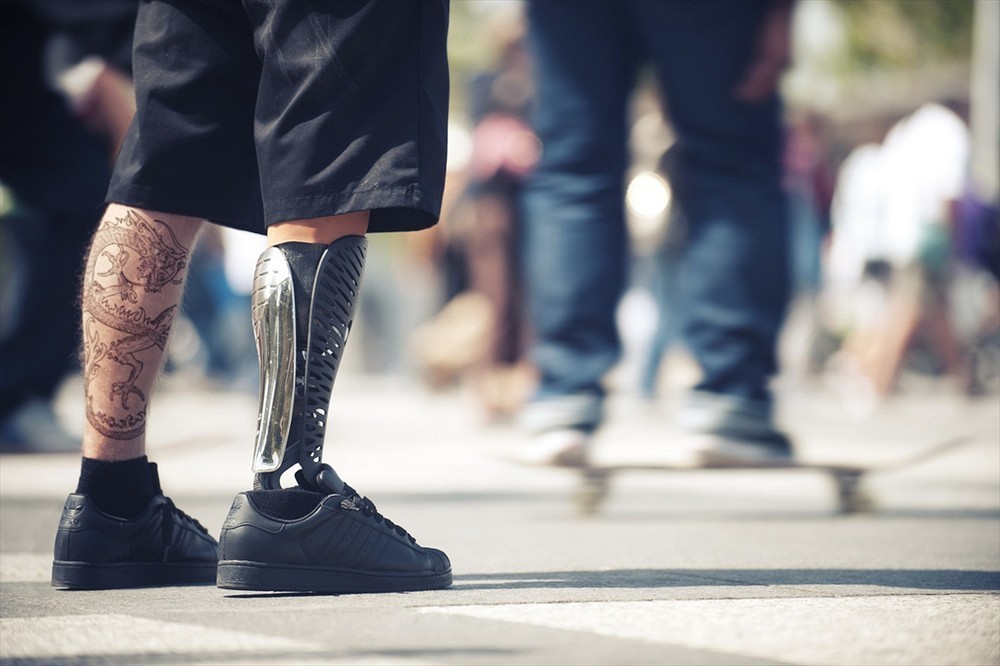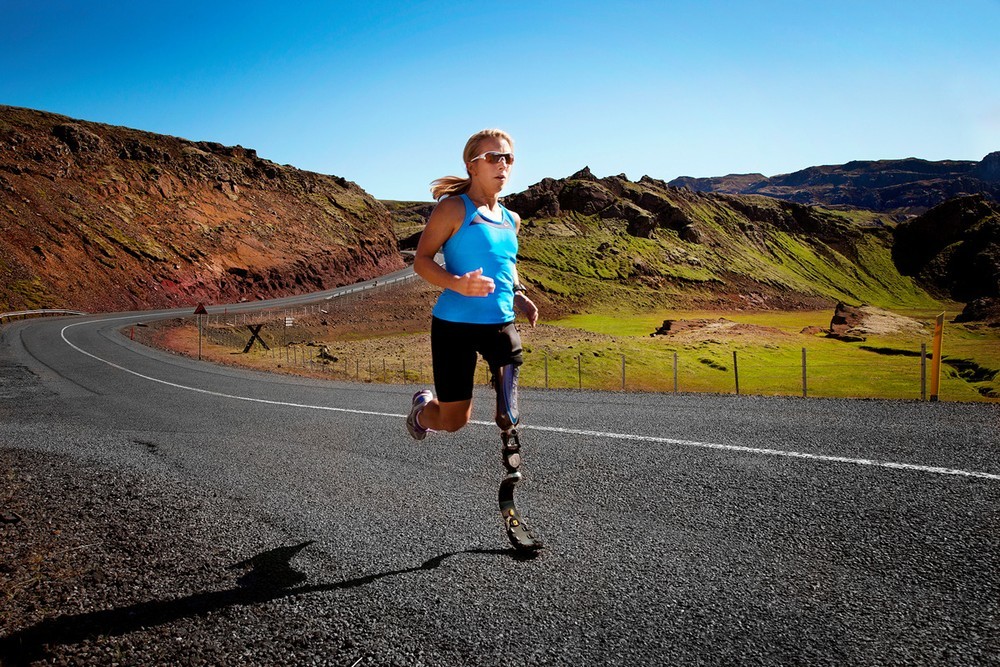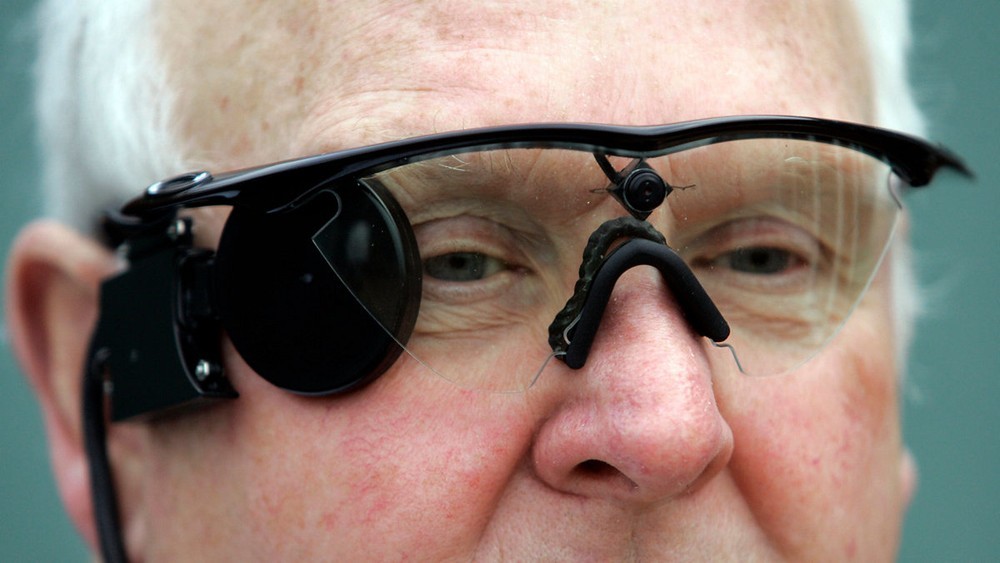When can we become cyborgs?
Cyberpunk is back in fashion. This year, Deus Ex: Mankind Divided is due out , and in the future, Detroit: Become Human David Cage is waiting for us . And this is not counting the Cyberpunk 2077 , on which the creators of The Witcher are now working . But more importantly, cyberpunk is increasingly invading the real world. Bionic prostheses have long ceased to be science fiction, now even fashion models wear them. And artificial eyes are already helping blind people see the world. And this is only the beginning. There are still years of progress ahead, which sooner or later will allow us to become like Adam Jensen . And what is being done today? Watch the video of our colleagues from the Games.Ru, and read the text version under the cut.
To begin with, you will have to disappoint those who dream of plugging their brains into the outlet in the near future. Modern implants cannot make you a Terminator. And cutting off your living hand for an ultramodern prosthesis is also not worth it yet. Serial bionic prostheses are created to help people who have lost limbs or even been born without them. However, serious progress has been made in this matter. Dentures can now connect to the human nervous system and receive commands from the brain. The control accuracy is such that with the help of mechanical fingers it is possible, for example, to tie shoelaces.

Modern cyborgs can easily engage in outdoor activities and sports: running, hiking, cycling and even swimming - the latest electronic prostheses are not afraid of water and dirt. And their components can be changed, as if in a constructor. For jogging, one foot model is better, and for walking another.
Perhaps in the future, these prostheses will set records that are inaccessible to the average person. And the American engineer Hugh Guerr even claims that native human legs will soon seem to us a relic of the past.



Herr himself lost both legs while climbing the mountains. Now the prostheses of its design allow people not only to climb, but also to dance. Herr creates prostheses that can replace real legs in everything - including sensations. They are able to process the impulses sent by the nervous system and convert them into movements. According to the inventor himself, this is not much different from controlling a real foot.
However, some went even further. For example, the Bao Research Group is working to recreate human skin. More precisely, so far only sensations from her. Special sensors from nanotubes will transmit signals from touching the nervous system. And she already - broadcast them to the brain.
By the way, scientists have also learned to grow full-fledged artificial skin. But while it is used only to treat burns. There is progress in the cultivation of human soft tissues. The next step is to make them not tear away the carbon-metal bones. What the final result will look like, you have already seen.

Of course, carbon fiber arms and legs alone are not enough to become a full-fledged cyborg. The next step is to implant digital cameras instead of eyes. And today, such experiments are also underway.
For example, Canadian director Rob Spence replaced his lost eye with a camera several years ago.. It is not yet possible to see in the dark with its help, because the camera is in no way connected to the owner’s brain. All you can do with it is to record short first-person videos. Fortunately, the director’s second eye remained intact, and there is no need to change it yet.
But science has already learned to help people who are completely blind.
One way is to wear special glasses with cameras. The signal from these cameras is received by a tiny chip mounted on the back of the retina. The image is not very clear, but it already allows blind people to navigate in space. The implantation operations of such devices have recently been performed in a pair of UK clinics.

However Australians from Monash Universitythey want to do without any operations at all. Here they create a system that can transmit a signal from cameras directly to the brain using electrodes that are attached to the back of the head. The technology is still under development, but already in 2016, the authors want to get the first results. And we believe that they will succeed. Indeed, right now bionics is experiencing an unprecedented rise. Mechanical prostheses turn from fiction into the mainstream. Today, they are not only self-taught engineers, but even actresses and fashion models. For example, the American model Rebecca Marine is not the first year to enter the podium with his bionic arm. Rebecca's goal is to prove that a mechanized body can also be beautiful. And looking at her, we are quite ready to believe it.

However, the widespread use of bionic prostheses is only a matter of time. Much more interesting is the question of where to move on. Now bionics has learned to help people with disabilities, but the next step in turn is to empower healthy people. Work in this direction is no less active. For example, Canadian optometrist Garth Webb invented bionic lensesthat triple the limit of human vision. Installing these lenses will not look more complicated than a conventional laser eye operation. But their capabilities cannot be compared to what laser surgery provides. The tiny biomechanical camera is able to instantly change focus from a very close distance to infinity and makes patients' vision much sharper, because it has three times higher resolution than a real eye. Dr. Webb hopes that bionic lenses will go on sale as early as 2017, after passing all clinical trials.
But it is far from a fact that science should continue to try to improve a person by implanting extraneous glands. After all, there is a more logical way - editing the genome. With it, scientists in the coming years could be able to treat many congenital diseases at the embryo stage. This will open the way to more serious tasks - for example, defeating epidemics and aging. Well, there, you see, it comes to letting the fireballs out of your hands.

However, experiments with the human genome are still banned in many developed countries. But we are sure that progress cannot be stopped. For example, back in April 2015, Chinese scientists performed an operation to change the genome of a human embryo. More recently, the editing of human DNA was authorized by the UK Department of Health. The goals of scientists and officials are as noble as possible: to help in the treatment of hereditary diseases. But this, of course, is only the beginning.
To begin with, you will have to disappoint those who dream of plugging their brains into the outlet in the near future. Modern implants cannot make you a Terminator. And cutting off your living hand for an ultramodern prosthesis is also not worth it yet. Serial bionic prostheses are created to help people who have lost limbs or even been born without them. However, serious progress has been made in this matter. Dentures can now connect to the human nervous system and receive commands from the brain. The control accuracy is such that with the help of mechanical fingers it is possible, for example, to tie shoelaces.

Modern cyborgs can easily engage in outdoor activities and sports: running, hiking, cycling and even swimming - the latest electronic prostheses are not afraid of water and dirt. And their components can be changed, as if in a constructor. For jogging, one foot model is better, and for walking another.
Perhaps in the future, these prostheses will set records that are inaccessible to the average person. And the American engineer Hugh Guerr even claims that native human legs will soon seem to us a relic of the past.



Herr himself lost both legs while climbing the mountains. Now the prostheses of its design allow people not only to climb, but also to dance. Herr creates prostheses that can replace real legs in everything - including sensations. They are able to process the impulses sent by the nervous system and convert them into movements. According to the inventor himself, this is not much different from controlling a real foot.
However, some went even further. For example, the Bao Research Group is working to recreate human skin. More precisely, so far only sensations from her. Special sensors from nanotubes will transmit signals from touching the nervous system. And she already - broadcast them to the brain.
By the way, scientists have also learned to grow full-fledged artificial skin. But while it is used only to treat burns. There is progress in the cultivation of human soft tissues. The next step is to make them not tear away the carbon-metal bones. What the final result will look like, you have already seen.

Of course, carbon fiber arms and legs alone are not enough to become a full-fledged cyborg. The next step is to implant digital cameras instead of eyes. And today, such experiments are also underway.
For example, Canadian director Rob Spence replaced his lost eye with a camera several years ago.. It is not yet possible to see in the dark with its help, because the camera is in no way connected to the owner’s brain. All you can do with it is to record short first-person videos. Fortunately, the director’s second eye remained intact, and there is no need to change it yet.
But science has already learned to help people who are completely blind.
One way is to wear special glasses with cameras. The signal from these cameras is received by a tiny chip mounted on the back of the retina. The image is not very clear, but it already allows blind people to navigate in space. The implantation operations of such devices have recently been performed in a pair of UK clinics.

However Australians from Monash Universitythey want to do without any operations at all. Here they create a system that can transmit a signal from cameras directly to the brain using electrodes that are attached to the back of the head. The technology is still under development, but already in 2016, the authors want to get the first results. And we believe that they will succeed. Indeed, right now bionics is experiencing an unprecedented rise. Mechanical prostheses turn from fiction into the mainstream. Today, they are not only self-taught engineers, but even actresses and fashion models. For example, the American model Rebecca Marine is not the first year to enter the podium with his bionic arm. Rebecca's goal is to prove that a mechanized body can also be beautiful. And looking at her, we are quite ready to believe it.

However, the widespread use of bionic prostheses is only a matter of time. Much more interesting is the question of where to move on. Now bionics has learned to help people with disabilities, but the next step in turn is to empower healthy people. Work in this direction is no less active. For example, Canadian optometrist Garth Webb invented bionic lensesthat triple the limit of human vision. Installing these lenses will not look more complicated than a conventional laser eye operation. But their capabilities cannot be compared to what laser surgery provides. The tiny biomechanical camera is able to instantly change focus from a very close distance to infinity and makes patients' vision much sharper, because it has three times higher resolution than a real eye. Dr. Webb hopes that bionic lenses will go on sale as early as 2017, after passing all clinical trials.
But it is far from a fact that science should continue to try to improve a person by implanting extraneous glands. After all, there is a more logical way - editing the genome. With it, scientists in the coming years could be able to treat many congenital diseases at the embryo stage. This will open the way to more serious tasks - for example, defeating epidemics and aging. Well, there, you see, it comes to letting the fireballs out of your hands.

However, experiments with the human genome are still banned in many developed countries. But we are sure that progress cannot be stopped. For example, back in April 2015, Chinese scientists performed an operation to change the genome of a human embryo. More recently, the editing of human DNA was authorized by the UK Department of Health. The goals of scientists and officials are as noble as possible: to help in the treatment of hereditary diseases. But this, of course, is only the beginning.
